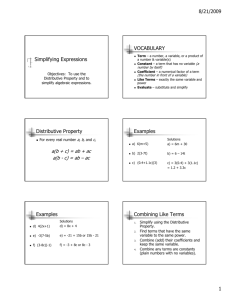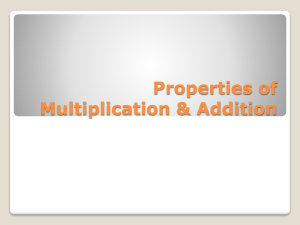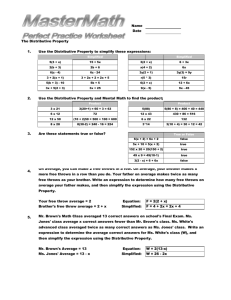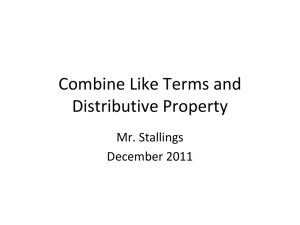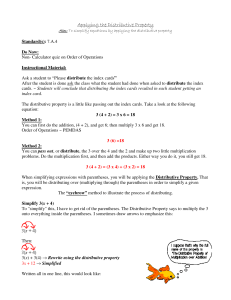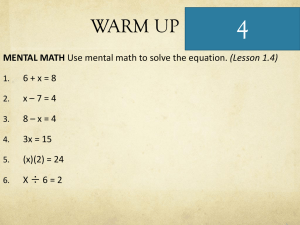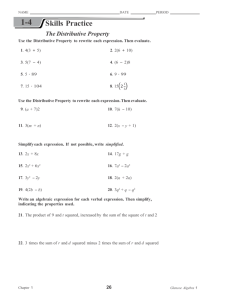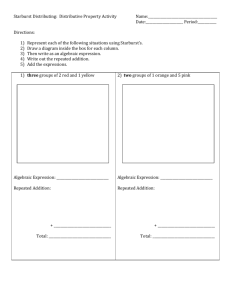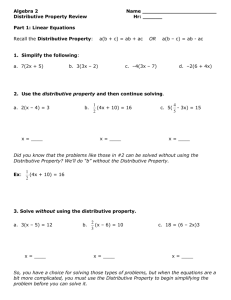Document
advertisement
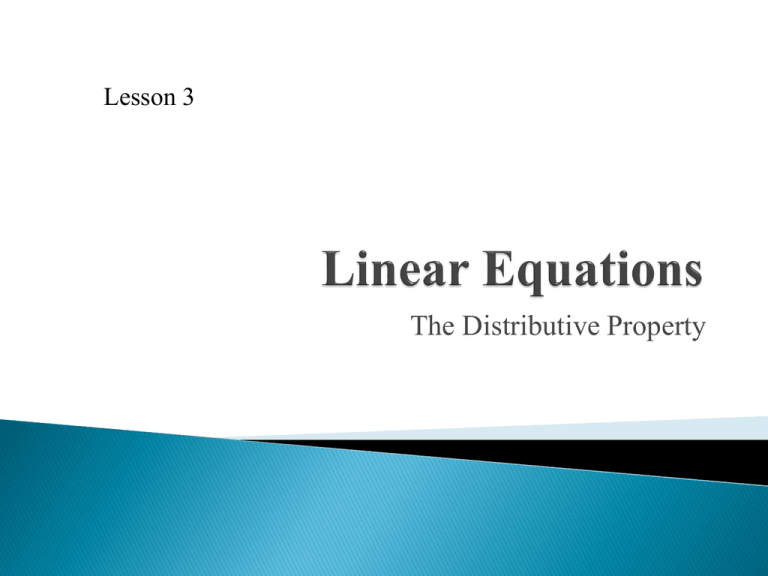
Lesson 3 The Distributive Property State whether the equation is true or not with the given values. 1. 6x – 4y = 22 when x = 5 and y = 2 2. 1 x 2 3. y = – 3x – 1 when x = – 2 and y = – 7 + 5 = y when x = 6 and y = 11 Target: Simplify expressions using the Distributive Property and combining like terms. Term: A number or the product of a number and a variable. Constant: Term that has no variable. Coefficient: The number multiplied by a variable in a term. Distributive Property: A property that can be used to rewrite an expression without parentheses. Like Terms: Terms that have the same variable raised to the same power. Equivalent Expressions: Expressions that have the same value. For any numbers a, b and c: a(b + c) = a ∙ b + a ∙ c a(b – c) = a ∙ b – a ∙ c Use the Distributive Property to simplify each expression. 2(x + 6) 2(x) + 2(6) 2x + 12 Use the Distributive Property to simplify each expression. 1 ( y 20 ) 4 1 1 ( y ) ( 20 ) 4 4 1 y 5 4 Use the Distributive Property to simplify each expression. – 5(3x – 1) – 5(3x) – (– 5)(1) – 15x + 5 Find the product by using the Distributive Property and mental math. 4(103) 4(100 + 3) 4(100) + 4(3) 400 + 12 412 Find the product by using the Distributive Property and mental math. 998 ∙ 7 7(1000 – 2) 7(1000) – 7(2) 7000 – 14 6986 Find the product by using the Distributive Property and mental math. 8(6.5) 8(6 + 0.5) 8(6) + 8(0.5) 48 + 4 52 Simplify by combining like terms. 3x – 2y + 4 – 2x + x + 4y 2x + 2y + 4 Simplify by combining like terms – 5(2x – 1) + 3x – 2 – 10x + 5 + 3x – 2 – 7x + 3 Simplify each expression. 1. 4(x − 3) 2. 9x + 2 + 3x – 4 − 7x 3. 10 + 8(2x + 3) − x How could the Distributive Property help you do mental math in real-world situations?

